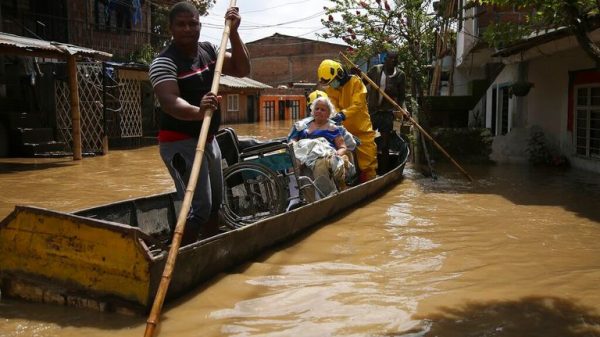The ancient mountains of the Andes are home to spectacled bears, pumas and the magnificent Andean condor. They’re also home to forests of lesser-known but critically important polylepis – known as “cloud trees.”
Growing up to 5,000 meters above sea level, they are the highest-altitude trees in the world and are known to absorb and retain water from clouds and the Andes’ melting glaciers. Slowly, they release this water through spongy moss that covers the trees, feeding the mountain streams and, eventually, the headwaters of the Amazon River.
In the past, polylepis forests covered vast areas of the mountain range, but today, after hundreds of years of deforestation and development, just 500,000 hectares remain, thought to be between 1% and 10% of the original forest. As a result, ecosystems have degraded, and the forests no longer provide a natural barrier to flooding or erosion. The water security of the millions of people who live in the foothills of the Andes is also at risk.
Constantino Aucca Chutas, a Peruvian biologist whose grandparents were farmers from the indigenous Quechua community, felt compelled to protect his ancestral lands and the people who live on them.
In 2018, he co-founded Acción Andina, a joint initiative between US nonprofit Global Forest Generation and Peruvian nonprofit Asociación Ecosistemas Andinos, dedicated to restoring the highland forest and protecting the local communities that depend on it. Work began in Peru, but has since spread across Ecuador, Argentina, Bolivia, Chile and Colombia, with the ultimate goal of protecting and restoring one million hectares of native Andean forest by 2045.
To date, Aucca Chutas says the initiative has planted more than 10 million trees across the region, with the help of thousands of indigenous families.
“The first time we were all united along the Andes was when we were part of one empire, the Inca empire,” he says. “The second time we united again to fight for our independence… This is the third time: united for one tree, the polylepis tree.”
Pachamama
The Inca, a civilization that ruled across the Andes mountain range in the 15th and 16th centuries AD, worshiped “Pachamama” or “Mother Earth.” Aucca Chutas says that a deep respect for nature was ingrained in the culture, with animals such as the condor, puma and the snake representing heaven, Earth and the world of the dead.
“In the Inca culture, they respect rivers, mountains and the environment,” he says. “They managed the nature, lived in balance with nature. That is the thing that we need to learn and practice.”
They also believed in the concept of “Ayni and Minka,” he adds, which represented an idea of working together for the common good. He was determined to revive this principle to help save the highland forests, enlisting the help of local Quechua communities.
“My dream was to plant millions of trees and I’m not going to do that alone,” he says.
Each year, in the valleys around Cusco, a city in the Peruvian Andes, Acción Andina hosts Queuña Raymi, a tree-growing festival. The celebration begins with ancestral rituals, such as dances and music to honor Pachamama. Then all generations, young and old, male and female, climb the mountain together, dressed in bright traditional clothing and carrying bundles of polylepis saplings on their backs.
In previous years, the community has planted as many as 100,000 trees in a single day, using a process of propagation, where root cuttings are planted. Aucca Chutas says that it is important to only plant local species as they have found that polylepis trees vary between regions and altitudes.
After planting, the initiative puts up fencing and sets up programs to protect the trees from fire, while the community help to care for and maintain the saplings.
The local knowledge is invaluable, says Aucca Chutas: “They have lived in the forest all their lives and have been seeing how these trees are growing, and I think they understand it much better than us.”
In return for their efforts, Acción Andina provides communities with support such as arranging medical care and installing solar panels to help bring electricity to villages. It also helps to secure legal rights to their land and establish protected areas for the native forests, safeguarding them against exploitation by timber, mining and oil companies.
Working together
The initiative has been hailed as a model for community-based conservation worldwide. In 2024, Acción Andina won Prince William’s Earthshot Prize in the “Protect and Restore Nature” category, and in 2022, Aucca Chutas was named a “Champion of the Earth” by the UN.
“The nature benefits of polylepis forests are immense,” she added. “They prevent soil erosion, capture moisture and retain rainwater with their lichens, mosses and other accompanying plants, playing a major role in water security together with the wetlands.”
These magical trees are worth protecting, and to do that, Aucca Chutas believes a collective approach is vital. “It’s the only way conservation is going to be successful,” he says. “Conservation and the protection of Mother Earth is a responsibility for all of us.”



























